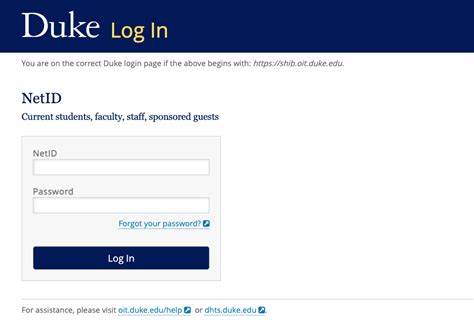Building a Strong Sense of Community for a Happier Life
Human beings are fundamentally social creatures, thriving on connections and interactions with others. A strong sense of community is essential for our emotional and mental well-being, playing a critical role in shaping our overall happiness and quality of life. As we navigate the complexities of modern life, it's easy to feel isolated and disconnected from those around us. However, by intentionally building and nurturing a sense of community, we can cultivate a happier, healthier, and more fulfilling life.
Research has consistently shown that people with strong social connections tend to have lower rates of anxiety and depression, improved physical health, and a longer lifespan. Conversely, social isolation and loneliness can have devastating consequences, including increased risk of mental health issues, cardiovascular disease, and even premature mortality. By prioritizing community-building and fostering meaningful relationships, we can mitigate these risks and create a supportive network that enhances our overall well-being.
The Power of Community: Unlocking Happiness and Well-being
So, what exactly is a sense of community, and how can we cultivate it in our lives? A sense of community refers to the feeling of belonging, connection, and attachment to a group of people or a place. It's about having a shared sense of identity, values, and purpose, which provides a sense of security, support, and validation. By building a strong sense of community, we can tap into a deeper sense of happiness, fulfillment, and life satisfaction.
Key Elements of a Strong Sense of Community
So, what are the essential elements of a strong sense of community? Research has identified several key factors, including:
| Element | Description |
|---|---|
| Shared Identity | A sense of belonging and connection to a group or community |
| Social Support | Access to emotional, informational, and practical support from others |
| Community Involvement | Opportunities for participation, engagement, and contribution to the community |
| Physical Environment | A safe, welcoming, and inclusive physical space that fosters social interaction |
Strategies for Building a Strong Sense of Community
So, how can we build a strong sense of community in our lives? Here are some practical strategies for fostering meaningful connections and a sense of belonging:
Join a Community Group or Club
Joining a community group or club is an excellent way to meet like-minded people and build relationships. Whether it's a sports team, book club, or volunteer group, find something that aligns with your interests and passions. For example, a study by the National Recreation and Park Association found that adults who participated in group sports reported higher levels of social connections and community engagement.
Volunteer Your Time
Volunteering is a great way to give back to your community while meeting new people and building connections. Research has shown that volunteering can increase feelings of social connection, empathy, and compassion. For instance, a study by the Corporation for National and Community Service found that volunteers reported higher levels of life satisfaction and well-being compared to non-volunteers.
Attend Community Events
Attending community events, such as festivals, concerts, or street fairs, is an excellent way to connect with others and build a sense of community. These events provide opportunities for social interaction, cultural exchange, and community engagement. For example, a study by the Urban Institute found that community events can help foster a sense of community and social cohesion among residents.
Key Points
- Building a strong sense of community is essential for emotional and mental well-being
- Social connections and community involvement can increase happiness and life satisfaction
- Key elements of a strong sense of community include shared identity, social support, community involvement, and physical environment
- Practical strategies for building community include joining a community group, volunteering, and attending community events
- Fostering meaningful relationships and a sense of belonging can have a positive impact on overall quality of life
Overcoming Challenges and Limitations
While building a strong sense of community is essential, it's not without its challenges and limitations. Some common obstacles include:
Time Constraints and Busy Schedules
Many of us lead busy lives, making it challenging to find time for community-building activities. However, even small moments of connection, such as a quick coffee with a friend or a brief conversation with a neighbor, can have a positive impact.
Shyness and Social Anxiety
For some, social interactions can be daunting, especially if you're introverted or experience social anxiety. Start small, with low-stakes interactions, and gradually build up to more significant connections.
Diversity and Inclusion
Building a strong sense of community requires inclusivity and diversity. Make an effort to engage with people from different backgrounds, cultures, and perspectives.
What are some simple ways to build a sense of community?
+Some simple ways to build a sense of community include joining a community group or club, volunteering your time, attending community events, and engaging in small acts of kindness and connection with those around you.
How can I overcome social anxiety and build connections?
+Start small, with low-stakes interactions, and gradually build up to more significant connections. Consider joining a community group or club that aligns with your interests, and take small steps to engage with others.
What are some benefits of building a strong sense of community?
+Building a strong sense of community can have numerous benefits, including increased happiness and life satisfaction, improved mental and physical health, and a greater sense of belonging and connection.
In conclusion, building a strong sense of community is a critical component of a happier, healthier life. By prioritizing community-building and fostering meaningful relationships, we can cultivate a supportive network that enhances our overall well-being. Remember, community is a two-way street – it requires effort, intention, and a willingness to connect with others. By taking small steps to build connections and engage with those around us, we can create a stronger, more compassionate, and more resilient community.



